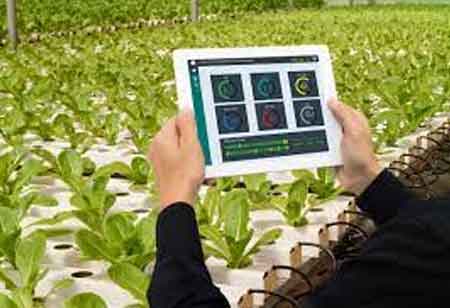Thank you for Subscribing to Agri Business Review Weekly Brief
Must-Have Tools for Tech-Savvy Farmers
Precision agriculture, automation, IoT, and AI will revolutionize agriculture, enhancing the food system's productivity, sustainability, efficiency, and resiliency.

By
Agri Business Review | Tuesday, February 11, 2025
Stay ahead of the industry with exclusive feature stories on the top companies, expert insights and the latest news delivered straight to your inbox. Subscribe today.
Precision agriculture, automation, IoT, and AI will revolutionize agriculture, enhancing the food system's productivity, sustainability, efficiency, and resiliency.
Fremont, CA: Tech-savvy farmers use modern tools to optimize productivity, efficiency, and sustainability. Must-have tools include GPS-guided tractors and machinery for precise planting, harvesting, and field management. Drones provide aerial imagery for crop monitoring, allowing farmers to track health and detect issues early. Soil sensors measure moisture levels, enabling smart irrigation and water conservation. Farm management software offers crop rotation, inventory management, and financial planning data analytics. Automated machinery, such as robotic harvesters, reduces labor costs and increases efficiency.
Due to automation and robotics integrations, agricultural equipment containing autonomous tractors and drones are thus being integrated into farming processes to streamline them. Drones monitor crop conditions and the state of fields to capture problems early through high-resolution images. Autonomous tractors with GPS and AI can conduct planting, tilling, and harvesting while taking minimal human efforts, where labor costs are reduced, and each operation is progressively more precise and efficient.
Sustainability prompts the innovation of agricultural equipment. Due to increasing climate change challenges, farmers seek ways to improve environmental stewardship. For example, equipment for regenerative agriculture practices, such as no-till planters and cover crop rollers, supports soil health and biodiversity. Such innovations allow farmers to adopt sustainable uses that improve soil quality with maximum productivity. Besides, innovation in bio-based and electric machinery for power generation will be triggered shortly to phase out fossil fuels and resulting carbon emissions.
The other big area of innovation in farm equipment involves the Internet of Things or IoT. Devices enabled by IoT can create seamless communication between machines and sensors and between the machinery and the farm management system. This means that, for instance, connected machines can self-report performance and send alerts about needed maintenance so that downtime can be reduced and efficiency enhanced. The connectivity also means the data can be shared among various layers of farmers, agronomists, and researchers, thus improving collaboration and knowledge sharing.
Improving decision-making in agriculture falls under the belt of contributions that advancements in data analytics and AI bring to the table. Algorithms powered by AI can analyze enormous amounts of data, looking for patterns and giving actionable insights that farmers can use to optimize their operations. For instance, predictive analytics can determine how much a crop will produce based on historical data and current conditions, making it easier to plan better and allocate resources accordingly.





